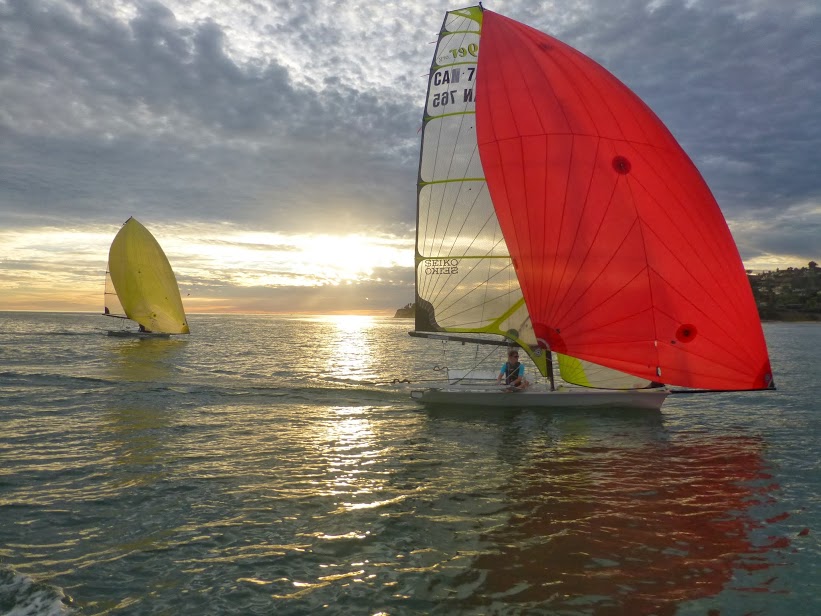Creating a solid game plan before every race is an important tool to help everyone on the boat understand what the big picture objectives are in the race, and if you make a good plan, it’s the key to long term improvement. When you check in with your coach or your teammates, be sure to check these three boxes to ensure that your game plan is air-tight:
- Observations: Each good game plan starts with a series of objective observations about how the course is setting up. “Darker water left,” “Oscillating shift pattern,” “Flat bottomed clouds on the right,” “Skewed starting line,” “Less current on the beach,” and, “Windy conditions,” are a few examples of observations that might factor into a game plan. Taking the time to list your observations at the beginning of a game plan will help everyone onboard begin to visualize how the race will look, and what types of tactics will come into play. For example, noting that, “The wind is 100% driving force or stronger,” should put you in a mindset of minimizing costly boat handling. In addition to setting the tone for the race, this part of the game plan will help you hone your strategic game down the road, as you learn to evaluate more variables at play.
- Plan A and Plan B Objectives: In this part of the game plan, the goal is to pick out the most important factors from your observations, and use them to clarify what the objective of the first beat will be. If for example, you know that the wind will be light during a race, you might conclude that pressure should be weighted more than shift, so even with an oscillating shift pattern, you may choose to extend to a side of the course to capitalize on more pressure. On the other hand, in side force conditions (slightly more breeze) you might prioritize shift over pressure, as a one knot pressure difference might be a small factor compared to sailing lifted. In this step, it’s also important to consider what you will do if your start doesn’t go according to plan; is it best to stick to your original plan, or do the conditions give you the flexibility to change the plan slightly in order to find better lanes? As a whole, this step sets the objective of the first beat.
- Inside Versus Outside Track: Once we have our objective in mind, the final key is to identify the strategic track that sets us up to accomplish our objective. A simple decision making model to apply is an inside or outside track on either side of the race course. Outside track courses should be employed when your objective requires you to win a side. Going back to the example of light air, if we see pressure on one side of the course, and we are confident that the extra pressure will be more important than the oscillating wind direction, we probably want to start as close to that side as we can, and beat other boats to get to the pressure (outside track). In contrast, in side force conditions, we might still favor the side with more pressure, but position ourselves on the inside track in order to control the fleet when the oscillations come through, and to keep options open later in the beat by staying off of lay line.
If you can lay out these three components of your game plan before the start, you’ll have a much better chance of pointing the boat in the correct direction in the heat of battle, when the pressure is on.


